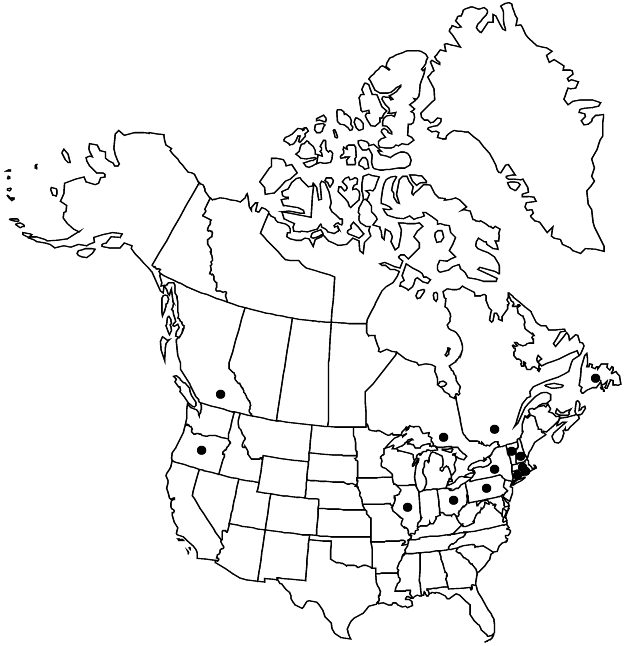Sagina japonica
J. Jap. Bot. 13: 438. 1937.
Plants annual, glandular-pubescent. Stems ascending to spreading, much-branched, usually filiform, frequently glandular-pubescent distally. Leaves: axillary fascicles rarely present; basal frequently in tuft of ascending leaves, rosette rarely present, blade linear, 4–10 mm, succulent, apex apiculate, glabrous; cauline leaves conspicuously connate basally, forming shallow, scarious cup, blade linear, fleshy, apex apiculate, glabrous or rarely pubescent; proximal leaf-blades 9–20 mm, becoming shorter distally, 4–7 mm. Pedicels slender, distal portion densely glandular-pubescent, becoming less densely glandular-pubescent proximally, proximal 1/4 usually glabrous. Flowers axillary, 5-merous; calyx glandular-pubescent basally; sepals elliptic to orbiculate, 2–2.5 mm, hyaline margins whitish, apex obtuse to rounded, glandular-pubescent, remaining appressed following capsule dehiscence; petals ovate to orbiculate, 1–2 mm, shorter than sepals; stamens 5 or 10. Capsules 2.5–3 mm, exceeding sepals, dehiscing ca. 1/4 length. Seeds dark-brown, reniform to nearly globose, plump, abaxial groove absent, 0.4–0.5 mm, densely tuberculate or strongly pebbled (e North America).
Phenology: Flowering early–late summer.
Habitat: Dryish sites, waste places
Elevation: 200 m
Distribution

Introduced; B.C., Nfld. and Labr. (Nfld.), Ont., Que., Conn., Ill., Mass., N.H., N.Y., Ohio, Oreg., Pa., R.I., Vt., e Asia, in Mexico (Veracruz)
Discussion
Sagina japonica was recently introduced in widely scattered locations in northeastern North America, and can be found especially in gravelly roadsides, walkways, and driveways. The plants tend to be much less robust and without distinctly succulent leaves.
Selected References
Lower Taxa
"/4" is not declared as a valid unit of measurement for this property.